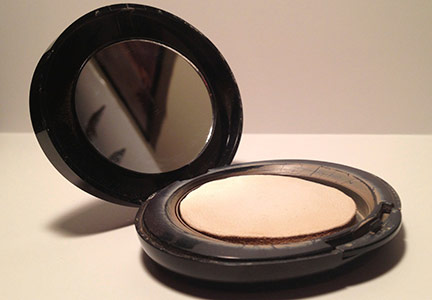Cosmetics and personal care products are everywhere and represent a large percentage of the products purchased by the average consumer. Such products include soaps, shampoos, perfumes, deodorants, lotions, bath salts. Over time, these kinds of products can accumulate and be a large part of our home environment.
We do not strictly control Google ad content. If you believe any Google ad is inappropriate, please email us directly here.

Much like cleaners and non-cosmetic products, we are initially separated from contact with them by their packaging. Unlike other products, cosmetics are intentionally placed in close contact with our skin on a regular basis. This means that anything in the package has a direct path into our bodies. Conversely, anything on our bodies, such as germs, has a better chance of making the return trip back into the packaging. Since our bodies are naturally covered with microbes, improper cosmetic use can affect the stability and safety of the product.
Thankfully, manufacturers - with the help of competent lab testing - have a number of ways and means to produce safe, stable cosmetic and personal care products. The first step is ingredient review. A good manufacturer will examine each ingredient for toxicity at the level it will be used in the product. Since some chemicals interact with others, the manufacturer will usually assess the toxicity of the final product formulation. The second step is good manufacturing. Producers of cosmetics take great care to avoid introduction of foreign material into cosmetic products, including bacteria, viruses, and fungi. The last step is to assure the stability of the product. Manufacturers - like consumers - want a product that looks and works well after sitting on a store shelf for an extended period.
For the most part, professionally manufactured cosmetics and personal care products are reasonably safe after they are made. Things can change, however, once the products begin to be used and contaminated by consumers. Specifically, microorganisms may be inadvertently introduced into products. To prevent this, producers add chemical preservatives to most personal care product formulations.
Everybody has trillions of microorganisms that live in and on them, such as on skin or in saliva. Normal use of cosmetics can introduce those microorganisms in the products, where they can take hold and begin to grow.
If enough food and water -often in the form of skin oils and body moisture - and germs are introduced, then the preservation system can quickly become overwhelmed. At that point, cosmetic and personal care products become a perfect home for bacteria and fungi, where they can grow to dangerous levels, leading to changes in product appearance or negative health outcomes such as skin irritation.
Another factor in the stability and safety of cosmetics is storage temperature and exposure to light. Generally speaking, the cooler and darker cosmetics are stored, the longer they will last and the less risk there will be that microorganisms will take hold and grow.
Take an average bottle of shampoo, for example. Fresh after manufacturing it is usually germ-free and ready for use. If kept in the shower and used over several months, microorganisms and microbial food sources (such as soap residue) can be introduced. Water can be introduced from the showerhead when the package is open. Microorganisms can be introduced from the shower water or from hands, if consumers put a little bit of a large dollop back into the bottle.
According to Rachelle Baker, B.S., Lab Manager with Cosmetic Test Labs, now that consumers know some of the ways cosmetics and other personal care products can become contaminated, a few simple tips will help keep germ levels down. This, in turn, will extend the life of the cosmetic products and keep people safe from harmful microorganisms. According to Baker:
Tip 1: Never put liquid personal care products back into the packaging once taken out or use.
Tip 2: Keep water and other foreign materials out of cosmetics and personal care products as much as possible.
Tip 3: Store cosmetics in a cool, dark place when possible.
By following these 3 simple tips, people can extend the life and improve the safety of the many cosmetic and personal care products that are found in the average home.
Manufacturers interested in making products robust, so that they withstand ordinary consumer use, can contact a good independent testing lab to run standardized studies to verify stability.
HHI Error Correction Policy
HHI is committed to accuracy of content and correcting information that is incomplete or inaccurate. With our broad scope of coverage of healthful indoor environments, and desire to rapidly publish info to benefit the community, mistakes are inevitable. HHI has established an error correction policy to welcome corrections or enhancements to our information. Please help us improve the quality of our content by contacting allen@healthyhouseinstitute.com with corrections or suggestions for improvement. Each contact will receive a respectful reply.
The Healthy House Institute (HHI), a for-profit educational LLC, provides the information on HealthyHouseInstitute.com as a free service to the public. The intent is to disseminate accurate, verified and science-based information on creating healthy home environments.
While an effort is made to ensure the quality of the content and credibility of sources listed on this site, HHI provides no warranty - expressed or implied - and assumes no legal liability for the accuracy, completeness, or usefulness of any information, product or process disclosed on or in conjunction with the site. The views and opinions of the authors or originators expressed herein do not necessarily state or reflect those of HHI: its principals, executives, Board members, advisors or affiliates.








